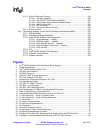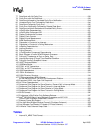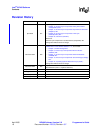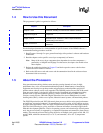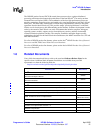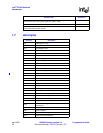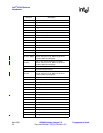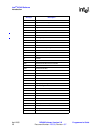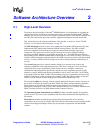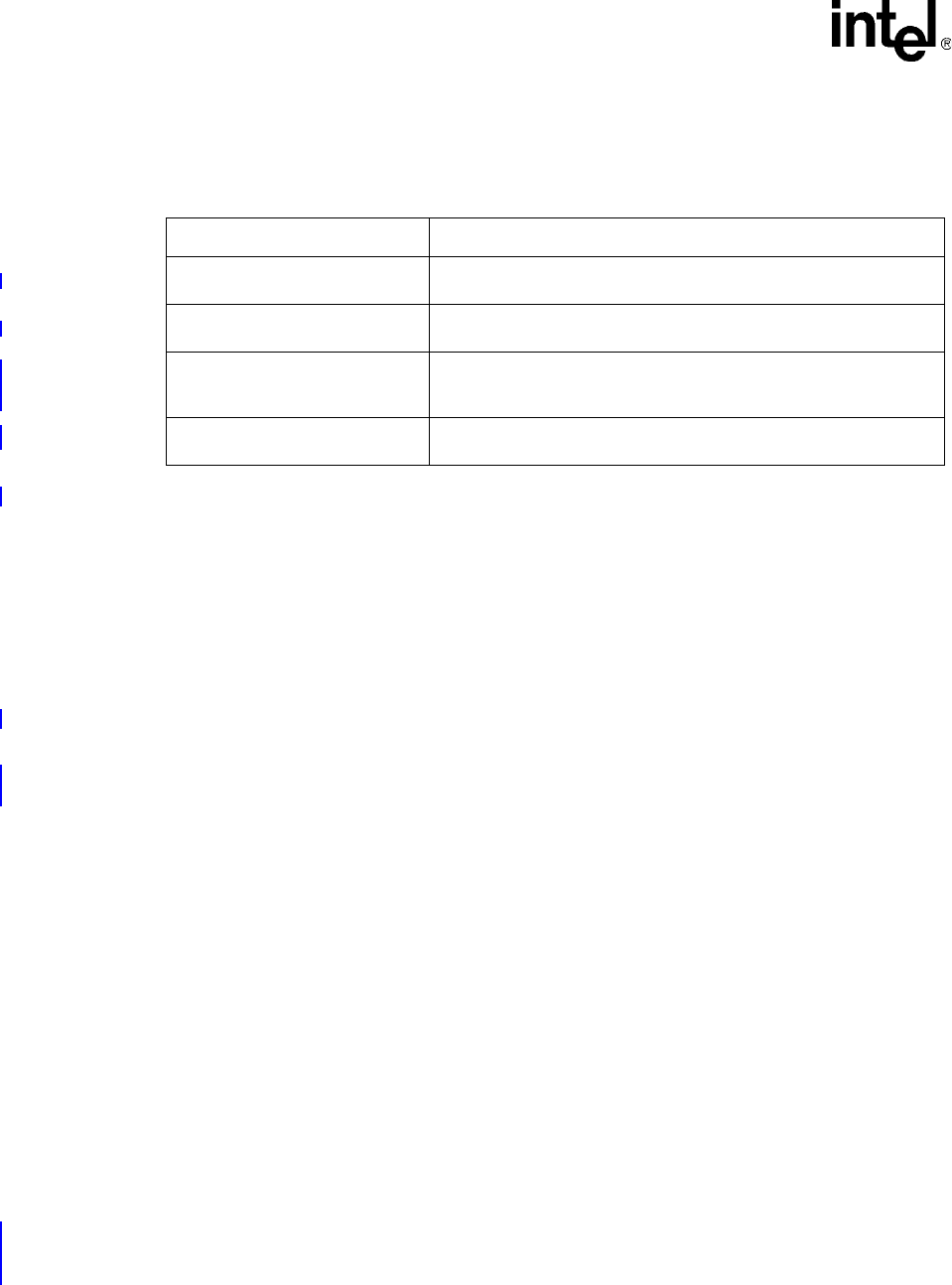
Intel
®
IXP400 Software
Introduction
April 2005 IXP400 Software Version 2.0 Programmer’s Guide
20 Document Number: 252539, Revision: 007
1.4 How to Use this Document
This programmer’s guide is organized as follows:
For the developer interested in a limited number of specific features of the IXP400 software, a
recommended reading procedure would be:
1. Read Chapters 1 through 3 to get a general knowledge of the products’ software and hardware
architecture.
2. Read the chapters on the specific access-layer component(s) of interest.
Note: Many of the access-layer components have dependencies on other components —
particularly on IxNpeDl and IxQmgr. For that reason, developers also should review
those chapters.
3. Review the codelet descriptions in Chapter 23 and their respective source code for those
codelets that offer features of interest.
4. Refer to the API source code and source code documentation found in the software release
documents folder as necessary.
1.5 About the Processors
Next-generation networking solutions must meet the growing demands of users for high-
performance data, voice, and networked multimedia products. Manufacturers of networking
equipment must develop new products under stringent time-to-market deadlines and deliver
products whose software can be easily upgraded. The IXP4XX product line and IXC1100 control
plane processors family is designed to meet the needs of broadband and embedded networking
products such as high-end residential gateways; small to medium enterprise (SME) routers,
switches, security devices; DSLAMs (Digital Subscriber Line Access Multiplexers) for multi-
dwelling units (MxU); wireless access points; industrial control systems; and networked printers.
The IXP4XX product line and IXC1100 control plane processors deliver wire-speed performance
and sufficient “processing headroom” for manufacturers to add a variety of rich software services
to support their applications. These are highly integrated network processors that support multiple
WAN and LAN technologies, giving customers a common architecture for multiple applications.
With their development platform, a choice of operating systems, and a broad range of development
tools, the processor family is supported by a complete development environment for faster time-to-
market. This network processor family offers the choice of multiple clock speeds at 266, 400, 533
and 667 MHz, with both commercial (0° to 70° C) and extended (-40° to 85° C) temperature
options.
Chapters Description
Chapters 1 and 2
Introduces the Intel
®
IXP400 Software v2.0 and the supported
processors, including an overview of the software architecture.
Chapters 4 through 22
Provide functional descriptions of the various access-layer
components.
Chapter 3 and 24
Describe the memory buffer management and operating system
abstraction layers, needed for a more in-depth architectural
understanding of the software.
Chapter 23 and 25–27
Describe codelets (example applications), ADSL driver, I
2
C driver, and
endianness.




